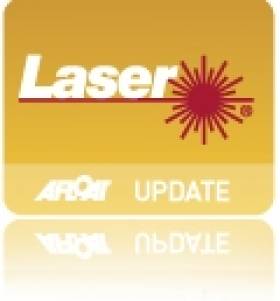Displaying items by tag: APPRENTICE
British Marine Celebrates National Apprenticeship Week
British Marine launches its exciting new campaign today to help raise the profile of the varied and rewarding career opportunities within the marine industry. Designed to increase the number of young adults choosing careers within the sector, particularly amongst those aged between 10 and 21 years of age, British Marine has developed a toolkit to inspire the workforce of tomorrow.
Amanda Simpson, Training Manager for British Marine, comments: “There is a variety of truly fantastic career opportunities within the marine industry that we want to ensure are highlighted to young students starting out their working life and our new 12-month campaign is a great way to celebrate these. We want to appeal to the marine engineers, designers, marine carpenters, berthing masters and on-water instructors of tomorrow to consider a rewarding career in our industry.”
To tie in with the launch of the new campaign, British Marine has run a poll amongst 2,000 adults1 already in employment. Results show that the opportunity to work outdoors (17%), do something unusual (31%) and make a physical product (22%) are the qualities that make for the happiest workers.
Amanda continues: “Unfortunately, new research shows many are unhappy in their choice of career, with 9.1 million2 saying they’re in the wrong career and 2.7 million2 saying they aren’t happy in their job. Only one in ten surveyed said they had all the things which make for a satisfying career. There is a real opportunity to highlight the range of highly fulfilling and valuable careers that are on offer within our thriving industry.”
The careers toolkit developed by British Marine to be rolled out over the coming 12-months includes:
- A film aimed at 16 to 21 year olds, focussing on the question, “Where do your skills fit in?” View it here: www.britishmarine.co.uk/careers
- A film aimed at 10 to 15 year olds, built around the question asked by many children, “What do you want to be when you grow up?”
- Marine job cards, a pack of brightly coloured cards in ‘Top Trumps’ style, illustrating the variety of jobs available in the marine industry. Aimed at young children, these cards will be issued to careers advisors and teachers as a way of starting to talk to pupils about the options available to them in the marine industry.
- A brand new careers section of the British Marine website, offering a wealth of information for young adults considering apprenticeships and their career options.
Amanda concludes: “This informative and highly engaging toolkit will allow the industry to connect with those looking at starting out their working careers, as well as those guiding them in their decisions.”
McMahon and Hegarty Win HYC Laser Races
HOWTH YACHT CLUB. LASER FROSTBITE WINTER 07/11/2010 RACE 1 LASER STANDARD: 1, Paul McMahon HYC; 2, Conor Greagsbey NYC; 3, Darrell Reamsbottom HYC; 4, Conor Murphy HYC; 5, Daragh Kelleher SSC; 6, Stephen Quinn HYC; LASER STANDARD APPRENTICE: 1, Conor Murphy HYC; 2, Brendan Costello MYC; 3, Brian Tyrrell HYC; 4, Conor Hopkins HYC; LASER STANDARD MASTER: 1, Paul McMahon HYC; 2, Conor Greagsbey NYC; 3, Darrell Reamsbottom HYC; 4, Daragh Kelleher SSC; 5, David Quinn HYC; 6, Evan Dolan NYC; LASER STANDARD GRAND MASTER: 1, Stephen Quinn HYC; 2, Robin Hegarty HYC; 3, Daragh Sheridan HYC; 4, Cathal Sheridan MYC; 5, Dermot Mowatt HYC; 6, Alan Carr SDC; LASER RADIAL: 1, Darragh Peelo MYC; 2, Vincent Varley MYC; 3, Robert Ferris HYC; 4, Simon Revill HYC; 5, Ciaran Costello MYC; 6, Carla Fagan
HYC LASER FROSTBITE WINTER 07/11/2010 RACE 2 LASER STANDARD: 1, Robin Hegarty HYC; 2, Colm Cunningham HYC; 3, Conor Greagsbey NYC; 4, Paul McMahon HYC; 5, Conor Murphy HYC; 6, Stephen Quinn HYC; LASER STANDARD APPRENTICE: 1, Conor Murphy HYC; 2, Conor Hopkins HYC; 3, Brendan Costello MYC; 4, Brian Tyrrell HYC; LASER STANDARD MASTER: 1, Colm Cunningham HYC; 2, Conor Greagsbey NYC; 3, Paul McMahon HYC; 4, Darrell Reamsbottom HYC; 5, Richard Deane HYC; 6, Evan Dolan NYC; LASER STANDARD GRAND MASTER: 1, Robin Hegarty HYC; 2, Stephen Quinn HYC; 3, Dermot Mowatt HYC; 4, Conor Costello MYC; 5, Daragh Sheridan HYC; 6, Edward Ferris HYC
























